The content of the article
The horned viper is considered to be a family of viper snakes, the genus false-horned. This reptile has earned such an unusual name thanks to a pair of its unusual protruding horns, which its nature endowed.
External characteristics
This type of snake has an average body size. The body is thick, has a cylindrical structure and can reach 0.89 - 1.16 meters in length. At the end of the body, the snake has a short tail, the length of which is approximately 8 or 8.5 cm.
The reptile has a wide and flat head, on top of its shape resembles a pear and is separated from the body by the neck. The eyes are medium in size, the pupils are vertical, transmit an elliptical shape and resemble a feline look. Snake's nostrils bulge outward and up. The reptiles of this species have a very rough skin surface by nature. Convex horns in the form of pointed lobes above the eyes are formed by several scales. The scales in the horn area are much smaller than the dorsal scales, it stretches along the surface of the snake body from the side, and resembles the tip of an elongated saw directed downward.
Nature endowed these individuals with a sandy color, with large brownish blots of rounded shape, which are deposited on the surface of the body in the middle along the back. These brown marks stand out on the body in turn with medium-sized dark spots on the sides of the body. A dark streak stretched from the eyes to the corner of the mouth. At the end of the body there is a black tail, with the exception of only snake cubs. At the bottom of the body of the snake there are no ornaments or marks, the color of the lower part is white.
In nature, there are a huge number of vipers of this species with a wide variety of color shades. There are light brown snakes, reptiles with gray, bronze and bluish-gray skin. On the surface of the body, brown spots of rectangular shape or stripes are often visible. In some reptiles, dark brown lines are visible on the body along the body on the side of the head, with small patches in the throat and on the sides of the body.
Habitats and Diet
The reptile prefers to settle in places that are located about 2.2 thousand meters above sea level. For habitat, the snake chooses an open landscape area, with sandy or hilly terrain. Also settles in rocky places, on stone slopes, with scattered boulders.
Food
The most active time of day of this snake comes with the arrival of twilight. The reptile goes hunting at night to feast on rodents and small animals. The diet of the snake includes lizards, birds, sometimes prefers to eat arthropods.
Behavior features
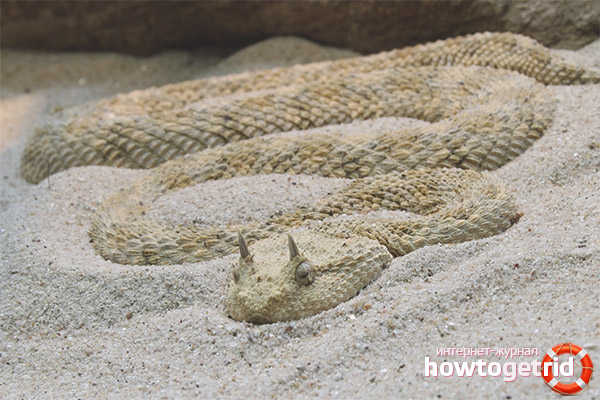
These reptiles move slowly and without too much noise. Rodents minks become a refuge for the snake. She often hides in the cracks of the earth's surface, under large stones, sometimes crawling into not very large shrubs. Often buried in the sand, only her eyes are visible on the surface. However, it is almost impossible to see a horned viper in such a secluded place because of its sand color, which serves as a camouflage.
Not the motley color of the snake helps her easily disguise in the area.However, if an uninvited guest is near, the reptile rises on the tail up in the form of the letter “S” and vigorously rubs its parts of the body. The flakes on the side touch each other, after which a specific hissing sound appears. This enemy-scaring sound can stretch for up to two minutes.
The venom of a horned viper
This species of snakes, as well as other members of its large family, scientists consider to be poisonous reptiles. Two sharp teeth are visible in the snake's mouth, which it folds and hides in the mouth until the next hunt.
After the bite of this snake in the human body, tangible reactions to the poison take place, the bitten one feels as if his heart is contracting strongly. In general, a person feels general pain, swelling, the body overcomes slight paralysis. At the same time, the bite of this snake is not fatal, so patients are unlikely to need serum or an antidote from the bite of a horned viper.
Video: horned viper (Cerastes cerastes)

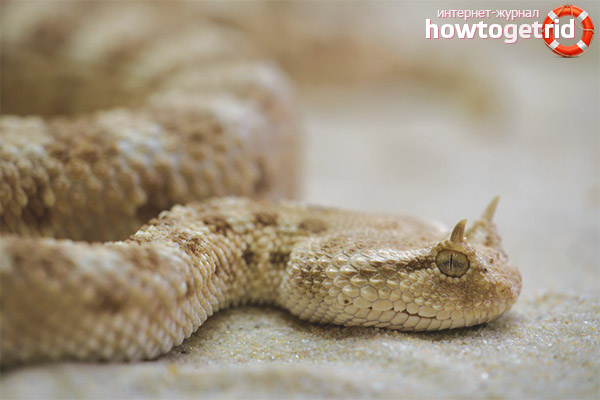

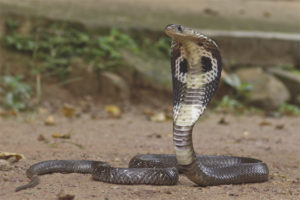
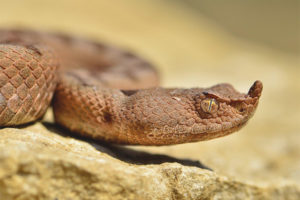
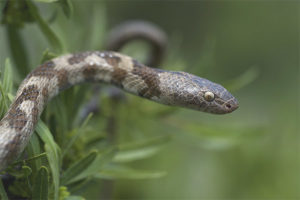
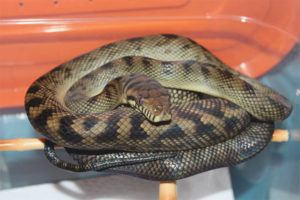
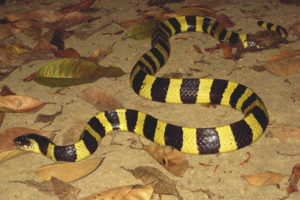

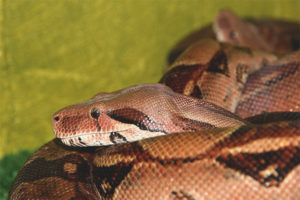
Submit